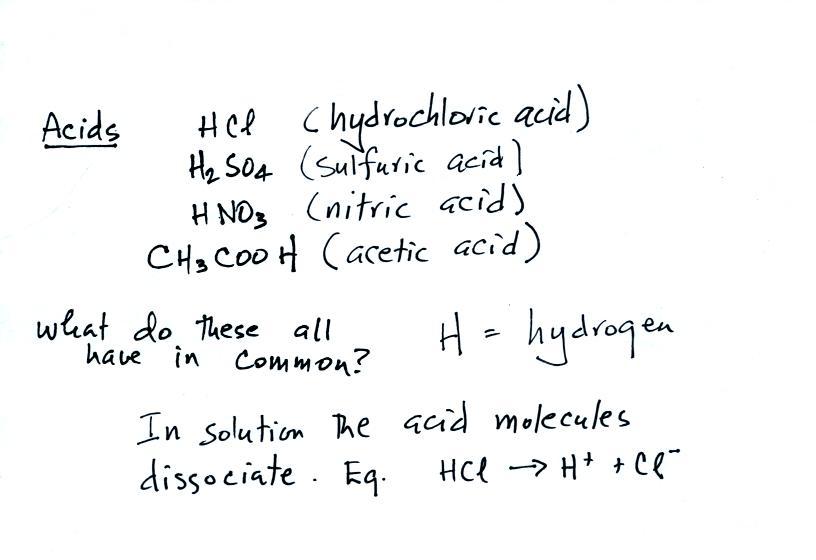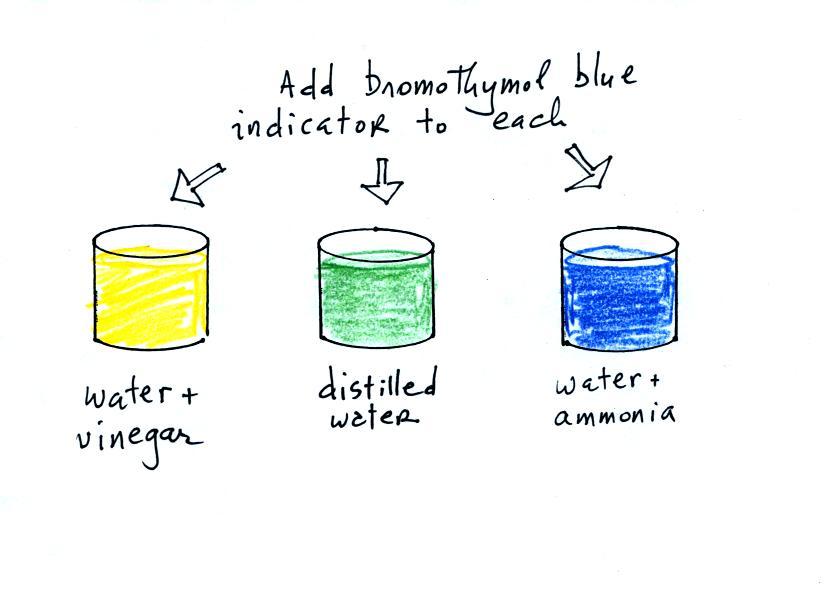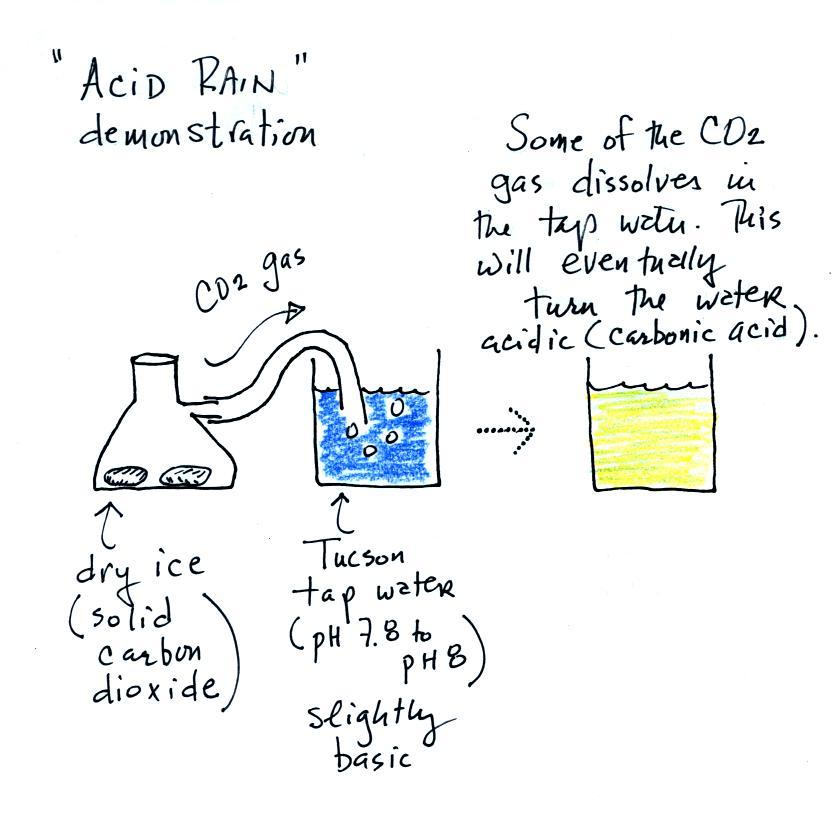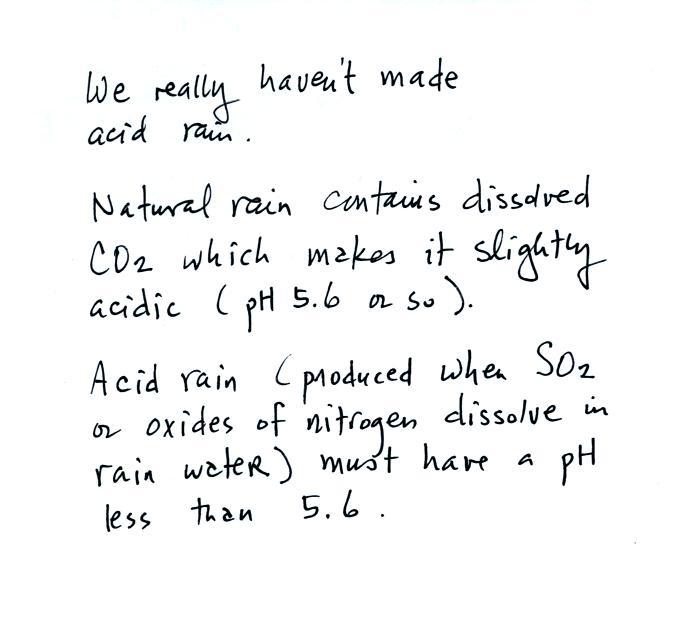Acid Rain Demonstration
Here is a short description of a colorful demonstration done in the
lecture version of this course.
Some common acids are listed below. In solution the acid
molecules dissociate (split). The presence of H+ ions
is what
makes these materials acids.
Actually
for a solution to be acidic it must have an H+ ion
concentration that
is greater than the H+ ion concentration found in distilled
water. The H+ ion concentration in pure water is 10-7
moles of H+
ions per liter of water. We often use the pH scale to measure
acid concentration. An H+ ion concentration of 10-7
moles/liter
corresponds to pH 7. You're no doubt familiar with the term
dozen. A mole
is really just the same idea and is a unit of
amount. A dozen eggs means 12 eggs. A mole is approximately
6 x 1023 atoms or molecules of a
particular substance.
A basic solution will have an H+ ion concentration that is
lower than
found in pure water.
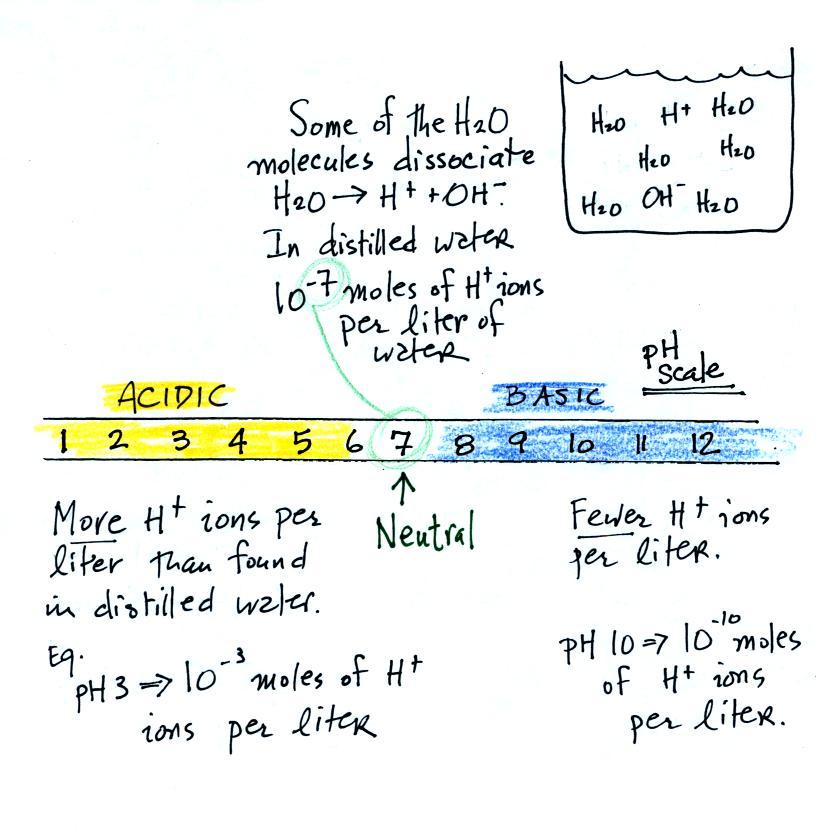
Now we can
proceed to the demonstration. We will start with three 1000 mL
beakers. They have all been filled with distilled water.
Some vinegar (contains acetic acid) has been added to the left beaker.
Some ammonia (a base) has been added to the right beaker.
At this point the three beakers are indistinquishable, they are all
filled with a clear liquid. We'll add some
bromothymol blue color indicator solution to each of the beakers.
Bromothymol blue has the amazing property of changing
color depending on whether it is mixed with an acid or a base.
We add some Tucson tap water to a larger 2000 mL beaker.
Tucson tap water is slightly basic (pH 7.8 to pH 8). So it turns
blue when we add
some bromothymol blue to it. A few small pieces of dry ice are
put into a flask. We close the flask with a stopper. The
end of a piece of tubing connected to the flask is immersed in the tap
water.
Dry ice sublimates. It turns directly from solid to ice (ordinary
ice melts and turns from solid to liquid). The gaseous CO2
is
invisible but you can tell it is there because of the bubbles in the
tap water. Some of the CO2 dissolves as it bubbles
through the
water and slowly turns the water acidic. You can tell that this
is occurring because the bromothymol blue indicator turns from deep
blue to green and eventually to yellow.
While we didn't actually produce acid rain, there is concern that
increasing atmospheric concentrations of carbon dioxide will dissolve
and acidify the world's oceans. This is discussed in a little
more detail here.
